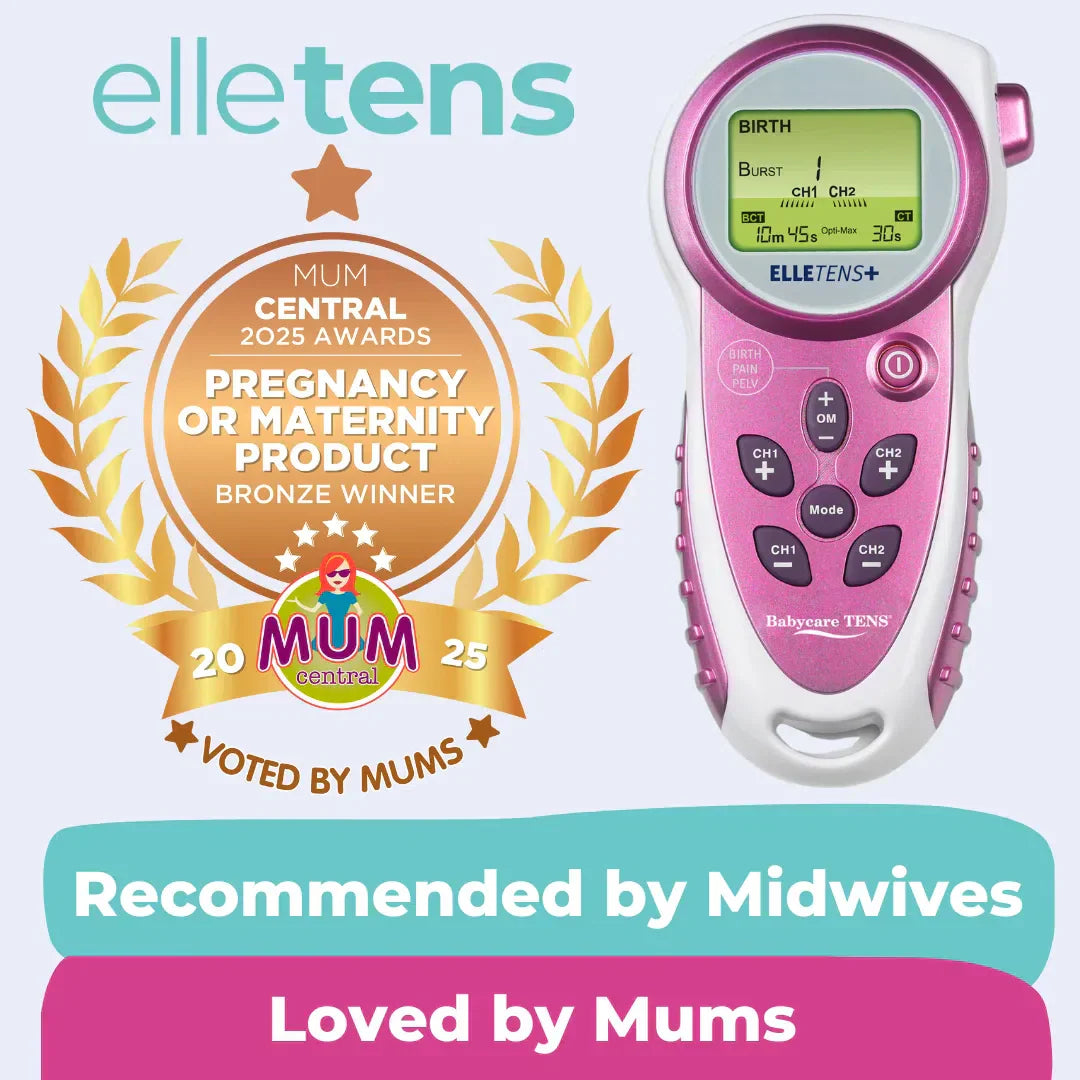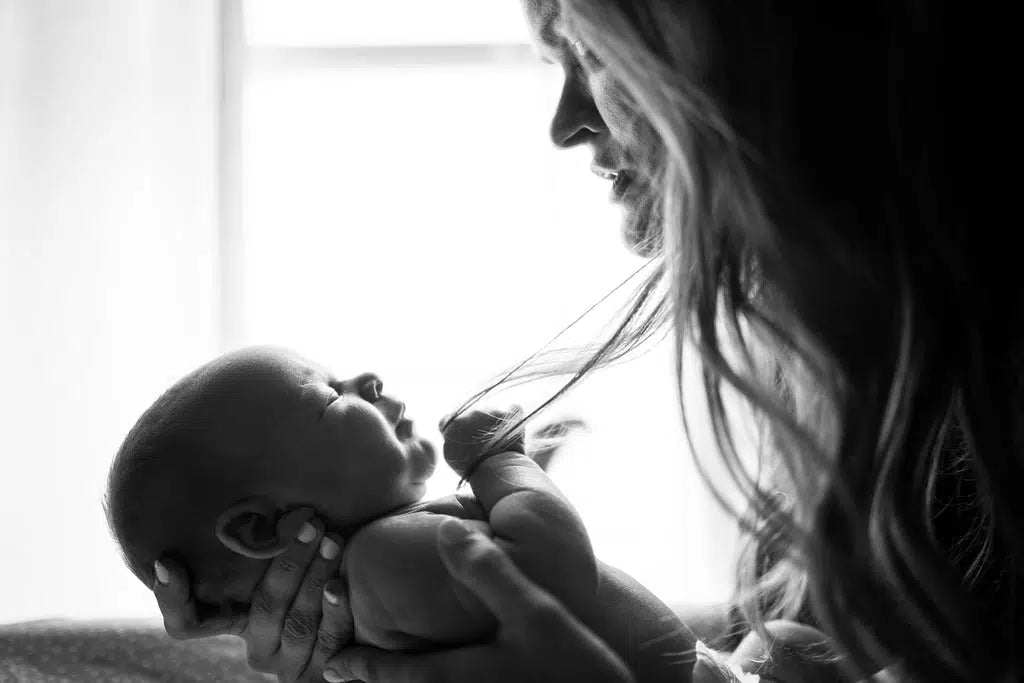Learn
We Won Bronze! Elle TENS Plus Takes Home a Mum Central Award
We are thrilled to share some amazing news, Elle TENS Plus has won Bronze in the 2025 Mum Central Awards for Best Pregnancy/Maternity Product! This recognition means the world to us. It highlights our continued dedication to supporting mums-to-be with reliable, innovative, and trusted pain relief during labour. We couldn’t have done it without you, our incredible community who voted, shared, and supported us throughout the journey. What Mum Central Had to Say “Elle TENS Plus continues to stand out as one of the most loved and effective tools for labour. Mums across the country rave about its simplicity, comfort, and how much relief it brings during contractions.”— Mum Central Awards 2025 Real Words from Real Mums “I don’t know how I would have coped without my Elle TENS Plus during labour. It gave me so much control and relief—I actually felt empowered!”— Sophie, first-time mum “It was a game changer. I recommend Elle TENS Plus to all my pregnant friends now. It helped me stay calm and manage pain naturally.”— Emma, mum of two A Heartfelt Thank You Being recognised in the Mum Central Awards is a huge honour. These awards celebrate brands that truly make a difference in the lives of Australian families. To be ranked among the top is a testament to the trust you place in Elle TENS Plus. What’s Next? We’ll continue our mission to empower women through pregnancy and childbirth with products that are safe, effective, and easy to use. This award motivates us to keep innovating and improving so we can serve you even better. Thank you once again for your support, it truly made this win possible.
Learn moreOur Elle TENS Plus journey for Jules Robinson!
Jules Robinson Recommends Elle TENS for Labour: “It’s a Must-Have!” We are so excited to share that Jules Robinson—TV personality, mum, and star of Married at First Sight—has been singing the praises of the Elle TENS machine for years! In a recent video, Jules shared her incredible experience using Elle TENS through both of her natural births. Her words say it all: “If you’re having a baby, you’ve got to get one of these (Elle TENS). I’ve had two natural births now, and without this I don’t know if I could have done it. Hand on heart, it’s like you’re coaching yourself while you’re giving birth.” Jules has been recommending Elle TENS to anyone and everyone—from podcasts and interviews to everyday chats with fellow mums-to-be. She’s a true believer in what this little device can do during labour. “This Elle TENS machine is just a must-have if you’re giving birth. And if you have health insurance, you also get a 60 to 80% rebate because it’s TGA registered. It is so amazing.” We couldn’t agree more. The Elle TENS is drug-free, safe, and designed to give you control and comfort during one of life’s biggest moments. Whether you’re planning a hospital birth or a home birth, it’s the ultimate support tool. 👇 Watch Jules’ full video below to hear why she swears by Elle TENS 👇
Learn moreVote for Us in the 2025 Mum Central Awards
Exciting News: Elle TENS is a Mum Central Awards Finalist! We are delighted to announce that Elle TENS has been nominated for the Best Pregnancy/Maternity Product category in the 2025 Mum Central Awards! This recognition is a testament to our commitment to supporting expectant mothers with high-quality, trusted products. Why This Recognition Matters The Mum Central Awards celebrate excellence in parenting and maternity products, recognising brands that truly make a difference for families. Being nominated is an honour, and winning would further reinforce the trust and value Elle TENS brings to mothers across Australia. Vote and Win! Cast your vote for Elle TENS and be in the running to win $300 in JB Hi-Fi gift cards! Every vote helps us get closer to winning, and it only takes a moment to show your support. Plus, by participating, you’ll be entered into a draw to win $300 in JB Hi-Fi gift cards! Vote now: Click here to cast your vote Voting is open from Monday, 24th March at 7:00 am AEST until Wednesday, 30th April at 11:59 pm AEST. Don’t miss your chance to support Elle TENS! Key Dates to Remember Voting closes: Wednesday, 30th April 2025 Winners announced: Wednesday, 21st May 2025 via Mum Central We are incredibly grateful for your ongoing support and trust in Elle TENS. Let’s make this happen together! Stay connected! Follow us on Instagram and Facebook for updates and more ways to support our nomination.
Learn moreHoliday Season Update from Elle TENS! Shipping Information
What an incredible year supporting Australian mums through their birth journeys! As we wrap up 2024, we want to thank every one of you who has trusted us with your birth preparation and pain management needs. Holiday Shipping InformationFinal Australia Post shipping cutoff: December 20th, 10am AEDTThis applies to both our TENS hire service and Elle TENS purchases.Express shipping remains available for those last-minute preparations! Planning for a summer baby? Our TENS hire service continues to be available through our easy online booking system. Visit our hire page to secure your labour TENS machine. Looking to purchase your own Elle TENS Plus? These make perfect gifts for expecting mums or birth professionals. Check out our Elle TENS Plus page to learn more about owning your own medical-grade TENS machine. We’re excited to continue supporting Australian families throughout 2025. Whether hiring or buying, we’re here to help you achieve a positive birth experience. Remember to place your orders before December 20th, 10am for delivery before the holiday break (subject to metro and Auspost shipping timeframes). Wishing you and your growing family a wonderful holiday season! Dont forget to keep track of Mr Clause as he makes his way to Australia! The Elle TENS Family
Learn moreFAQ: Everything You Need to Know About Renting an Elle TENS Machine for Labour
We’re here to help make your decision easy! Explore our comprehensive FAQ covering everything about the rental process, device usage, and more. How Does the Rental Process Work? Renting an Elle TENS machine is simple: Book Online: Visit our website to reserve your device. Receive Your Machine: It will arrive on or close to the first day of your hire period. (** Subject to Australia post and your postcode, to check shipping, we post from ACT 2611) Use During Labour: Take it with you and experience the benefits during labour. Return It with Ease: We’ll send you a reminder and include prepaid postage for easy returns. Don’t forget to bookmark our site for next time and share your experience with friends! When Should I Book My TENS Machine? We recommend booking delivery for around 37 weeks of pregnancy. Booking early helps you avoid rush fees and ensures availability. Rental Period We offer 6 and 8-week rental periods. Need more time? Extend every week for an additional $10 extra. What’s Included in the Rental Package? Your rental includes: Elle TENS 2 machine Lead wires Electrode pads (BabyCare TENS Maternity Electrodes) 2 AA batteries Instruction manual Carry pouch (yours to keep) Prepaid return postage label Note: Additional electrodes can be purchased if you’d like to practice using the machine before labour. Using the TENS Machine During Labour When should I start?Start as soon as regular contractions begin. Use a low setting initially to allow your body to adjust. It takes about 30–60 minutes to feel the full effects, so starting early helps build up endorphins for pain relief. Gradually increase intensity as labour progresses. The UK’s Royal College of Midwives recommends starting in early labour for maximum benefit. TENS and Other Pain Relief OptionsTENS pairs well with: Hypnobirthing techniques for relaxation and breathing Gas (Nitrous Oxide) during contractions Massage, movement, and positioning (not water immersion) Birthing combs for added acupressure (Come check out our awesome Birth Comb- The AcuiCOMB) Why Choose a TENS Machine for Labour Pain Relief? Drug-free pain relief with no side effects for you or your baby Let your birth partner actively support you Provides control over your pain management Helps manage back pain, especially for posterior presentations Did You Know? 1 in 5 women in the UK use TENS as their sole pain relief during labour. Here in Australia, usage is growing, with more women opting for drug-free options. Pricing and Availability 6-week rental: $69 8-week rental: $79 Both options include shipping and return postage. Check our website for the latest pricing. Need more time? Email us, and we’ll happily arrange an extension. Why Rent the Elle TENS 2? The Elle TENS 2 is the global leader in labour TENS devices. Designed specifically for pain relief during childbirth, it includes all the key features without unnecessary extras. While the Elle TENS Plus is our best-selling 3-in-1 device, it’s more suited for postpartum recovery, as pelvic floor stimulation isn’t recommended until 10–12 weeks after birth. Shipping and Returns Delivery: Shipped via standard or express post. Express is an additional cost. Returns: A pre-paid return label is included for hassle-free shipping. Please reuse the original postage box. Safety First At Elle TENS Australia, we prioritize your safety. Our devices use Genuine BabyCare TENS Electrodes, tested in the UK and approved in Australia. Pro Tip: Always check for TGA-approved devices and electrodes when renting or purchasing a TENS machine. Ready to experience drug-free labour pain relief? View our Elle TENS 2 Labour Hire to book now or contact us with any questions. We’re here to support you every step of the way!
Learn moreExploring Natural Pain Relief in Australian Births: TENS Journey
As more Australian mothers seek drug-free options for managing labour pain, it’s important to explore all available methods. With Labour TENS gaining broader attention, let’s delve into recent insights and trends in Australian birthing practices, with a special focus on the versatility of TENS. At Elle TENS, our aim is not only to provide mums-to-be with the leading TENS machine for their labour but also to empower you with the knowledge to make the most informed decisions on your journey. TENS: A Flexible, Drug-Free Pain Management Option A recent article from Fiona Stanley Fremantle Hospital, one of Perth’s major hospitals under the Southern Metropolitan Health Service Area, highlights TENS as a safe pain control option during labour. They highlight that: TENS is safe for both mother and baby when used correctly. It can reduce the likelihood of reporting severe pain during labour. TENS works by partially blocking pain messages to the brain and releasing natural painkillers. The benefits of using TENS during labour are: Easy to use at home and in the hospital Controlled by the mother No side effects or drowsiness Non-invasive and allows freedom of movement Can be used alongside other pain relief methods The Versatility of TENS One of the standout advantages of TENS is its flexibility throughout the labour process: Start at home: You can begin using TENS as soon as contractions start, providing relief from the earliest stages of labour. Hospital-friendly: Continue using TENS during your journey to and at the hospital. Compatible with other methods: TENS can be used in conjunction with gas for additional pain management. Limitations: While versatile, TENS and water don’t mix – so no TENS in the birthing pool! (Unless you’re aiming for a shocking experience, and we don’t mean the kind that comes with meeting your baby for the first time ) This versatility allows for a seamless transition from home to hospital, providing consistent pain relief throughout your labour journey. Australian Birth Statistics: A Trend Towards Natural Approaches Recent data from the Australian Institute of Health and Welfare (2022) shows: 61% of women in Australia had a vaginal birth (49% had a non-instrumental vaginal birth, 6.9% had a vacuum-assisted vaginal birth, 4.7% had a forceps-assisted vaginal birth) While 39% of births were caesarean sections, there’s a growing interest in natural birthing options. Pain Relief Choices in Australian Births Interestingly, about 80% of women who give birth in Australia receive some form of pain relief. The breakdown is as follows: Gas: Used by 101,642 women Epidural/spinal blocks: Received by 90,384 women (46% of births) Opioids: Used by 20,314 women These statistics show that while many women still opt for medical pain relief, there’s a significant portion exploring alternative methods. The Growing Interest in Drug-Free Options The fact that 54% of women don’t use epidurals suggests a substantial interest in drug-free or alternative pain management techniques. TENS machines, being non-invasive and drug-free, align well with this trend. Conclusion As Australian birthing practices evolve, TENS offers a versatile option for labour pain management, aligning with the growing preference for natural birthing experiences. If you’re considering TENS for your labour: Discuss its suitability with your healthcare provider Remember it can be used from home to the hospital, but not in water Aim for a safe and comfortable birthing experience for both mother and baby For more information on pregnancy pain management, consult these reputable Australian resources: Pregnancy, Birth and Baby (www.pregnancybirthbaby.org.au) The Royal Women’s Hospital (www.thewomens.org.au) healthdirect (www.healthdirect.gov.au) Australian Institute of Health and Welfare (www.aihw.gov.au) Royal Australian and New Zealand College of Obstetricians and Gynaecologists (RANZCOG) These sites offer evidence-based information from trusted health organisations. Always seek personalised advice from your healthcare provider for your specific needs to see if TENS is a suitable natural pain relief for you and your birthing jouney. Final note We invite you to explore our range of Labour TENS machines, designed to support you through your birthing journey. For the latest updates, tips, and information on pain management during labour, follow us on our social media channels and stay informed throughout your pregnancy.
Learn moreFAQ on Labour Pain
Let’s have a chat about labour pain, shall we? It’s a bit of a complex beast, but we’ll break it down for you in a friendly way. Here’s what’s really going on when you’re bringing your little one into the world. What Causes Labour Pain? The Uterus Doing Its Thing Your uterus is working overtime, contracting to help your bub make its grand entrance. These contractions can be pretty intense, like a really strong bear hug you can’t escape! Cervix Changes Your cervix is getting ready for the big show, stretching and opening up. This can feel a bit uncomfortable, to say the least. Pressure Down Under As bub moves down, they’re putting pressure on your pelvic floor. It’s like they’re knocking on the door, saying “I’m ready to come out now!” Stretching Sensations Your body is making room for bub to pass through. This stretching can feel pretty full-on, especially towards the end. Bub’s Journey As your little one moves into position and starts their journey out, you’ll feel increased pressure. It’s like they’re packing their bags and heading for the exit! Waters Breaking When your waters break, it can increase the pressure and discomfort. It’s nature’s way of saying “Show time!” Perineum Prep The area between your vagina and bum (perineum) is getting ready for bub’s arrival. This can add to the overall sensation. Mind Matters Your emotions and thoughts play a big role too. Feeling anxious or scared can amp up the pain, while feeling calm and prepared can help manage it. Back Labour Some mums experience back labour, where bub’s position causes extra pressure on the lower back. It’s like having a backache on steroids! Remember, every mum’s experience is unique. Some describe it as intense pressure, others as strong period pain. The good news is there are heaps of ways to manage labour pain, from natural techniques to medical options. In our opinion, our Elle TENS devices are a top-notch choice for pain management during labour. It’s a world-class device trusted by midwives and mums that gives you control and comfort without the need for drugs. Of course, your midwife or doctor will work with you to find what suits you best, but we reckon the Elle TENS is worth a go! Labour might be tough, but you’re tougher! And at the end of it all, you’ll have your beautiful bub in your arms. How good is that?
Learn moreLabour Tens
Many Mums-To-Be plan for a natural birth and discuss their pain relief options with their midwife, doula or obstetrician well ahead of the big day. Labour TENS or Obstetric TENS is a safe method of pain relief that is recommended by medical professionals as it provides Mums with a wonderful source of pain relief during their labour. We all know that birthing your baby is not easy but it is certainly possible to do it without drugs or medical intervention with the help of a TENS machine – check out our reviews where you will hear from women who have used our labour TENS to achieve just that. Not only will a labour TENS provide you with a drug free option for pain relief, it also allows you to stay in the comfort of your own home for longer during your initial stages of labour. Lots of women also say that it is a great distraction and using the Boost button during contractions gives them an element of control – which has to be a good thing! Labour TENS is not a new concept, it has been used all over the world in maternity wards and home births with the full support of midwives, doulas and obstetricians for many years. It is really popular in the UK where 1in 5 women use it as their only source of pain relief during labour. Our TENS devices are Babycare TENS from the United Kingdom, which are the leading maternity TENS supplier in the world and the most popular choice for mums-to-be. Babycare TENS machines are specifically designed to combat pain during childbirth. All Babycare TENS machines include an integrated ‘boost button’, vital for relieving pain during contractions.
Learn moreWhat is TENS?
How does a TENS machine work? TENS is Transcutaneous Electrical Nerve stimulation or TENS for short. It is an effective method of pain relief involving the use of a mild electrical current. Users attach Electrode pads to the affected part of the body and then switch on the TENS Machine. The TENS Machine passes small electrical impulses to the affected area of your body, this is where the user feels a tingling sensation similar to pins and needles. These tingling sensations which are the electrical impulses reduce the pain signals going to the bodies spinal cord and brain, which help to relieve pain and relax muscles. They also stimulate the production of endorphins, which are the body’s natural painkillers. What is TENS? Transcutaneous electrical nerve stimulation or TENS for short is an effective method of pain relief involving the use of a mild electrical current. Users attach Electrode pads to the affected part of the body and then switch on the TENS Machine. The TENS Machine passes small electrical impulses to the affected area of your body, this is where the user feels a tingling sensation similar to pins and needles. These tingling sensations which are the electrical impulses reduce the pain signals going to the bodies spinal cord and brain, which help to relieve pain and relax muscles. They also stimulate the production of endorphins, which are the body’s natural painkillers. What TENS is used for? TENS can be used to help reduce pain and muscle spasms caused by a wide range of conditions including: arthritis period pain knee pain neck pain back pain sports injuries It is also used as a method of pain relief during labour. “One in 5 Australians aged 45 and over are living with persistent, ongoing pain.” Trying TENS If you’re thinking about trying TENS, it’s a good idea to speak to your GP about a referral to a physiotherapist. TENS machines are available for purchase or hire. If you have Private Health Insurance you may be eligible for a rebate on your purchase – just check with your provider. How to use TENS The information below is a general guide on how to use a TENS machine. You should always follow the manufacturer’s specific instructions. TENS machines are small and lightweight, so you can use them while you’re working or on the move. You can put it in your pocket, clip it to your belt, attach it to a lanyard or hold it in your hand. You can use TENS throughout the day for as long as you like, although it shouldn’t be used while you’re driving, operating machinery, or in the bath or shower. Positioning the pads Make sure the machine is switched off before you attach the pads to your skin. Position the pads either side of the painful area, at least 2.5cm (1 inch) apart. Never place the pads over: the front or sides of your neck your temples your mouth or eyes your chest and upper back at the same time irritated, infected or broken skin varicose veins numb areas Turning it on and adjusting the strength Turn on the TENS machine when the pads are attached in the correct places. You’ll feel a slight tingling sensation pass through your skin.The machine allows you to control the strength of the electrical impulses by simply using the arrow buttons. Start on a low setting and gradually increase it until the sensation feels strong but comfortable. If the tingling sensation starts to feel painful or uncomfortable, reduce it slightly. Switch the TENS machine off after you’ve finished using it and remove the electrodes from your skin. With reusable electrodes, place them back on the paper backing they came on to preserve the stickiness! Are there any risks of side effects? For most people, TENS is a safe treatment with no side effects. Some people may be allergic to the pads and their skin may become red and irritated, but special pads for people with allergies are available. TENS isn’t safe for everyone to use. Don’t use it without first seeking medical advice if: you have a pacemaker or another type of electrical or metal implant in your body you’re pregnant, or there’s a chance you might be pregnant – TENS may not be recommended early in pregnancy. (TENS machines are suitable during labour) you have epilepsy or a heart problem
Learn more








